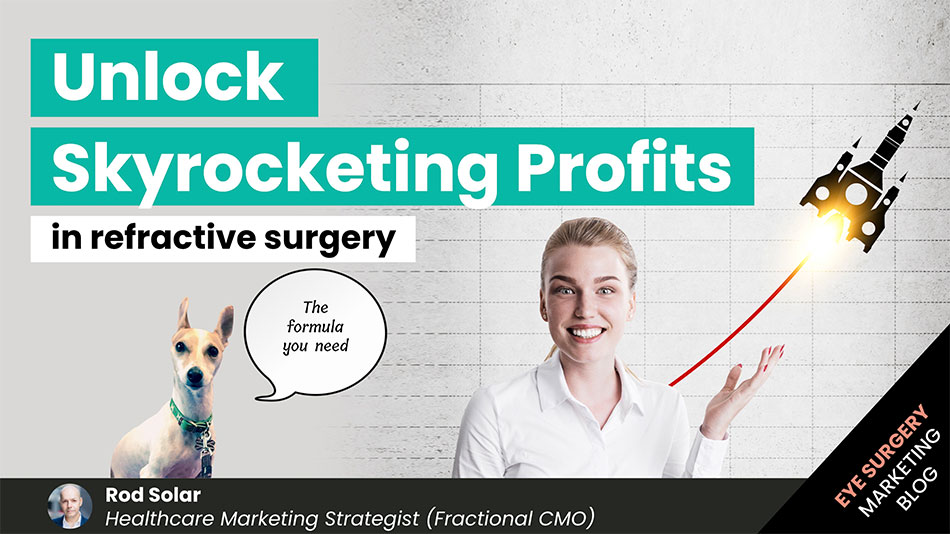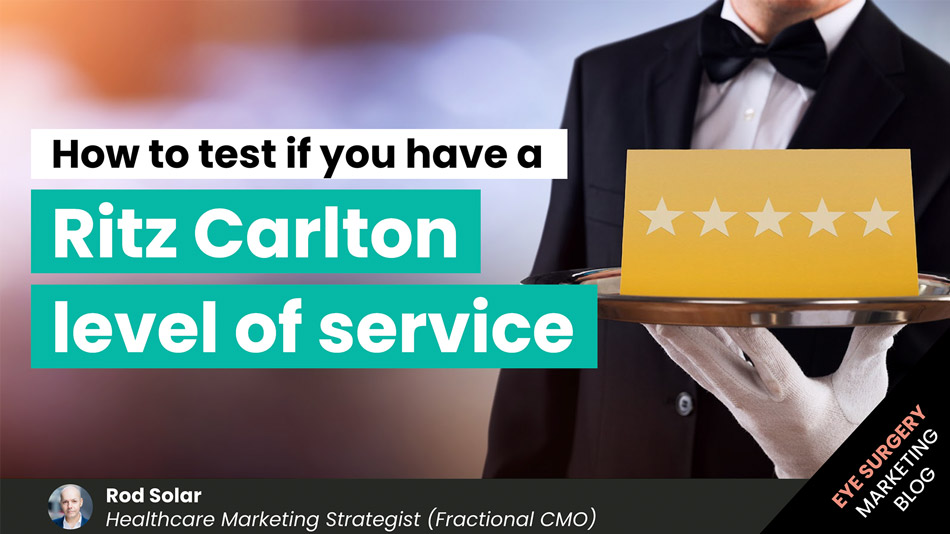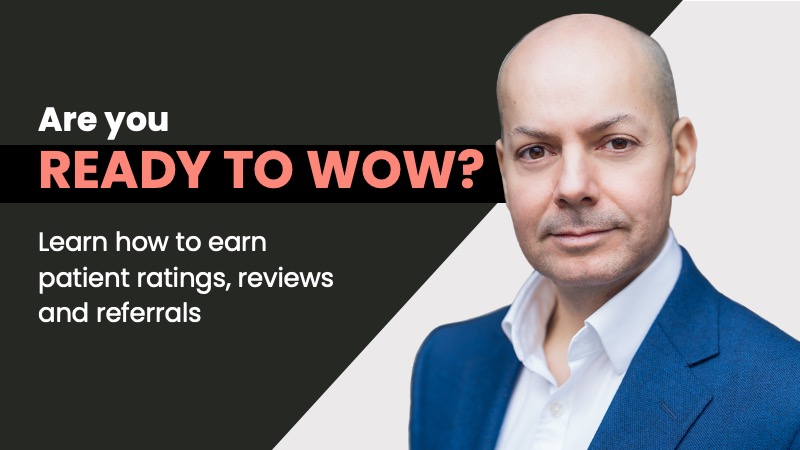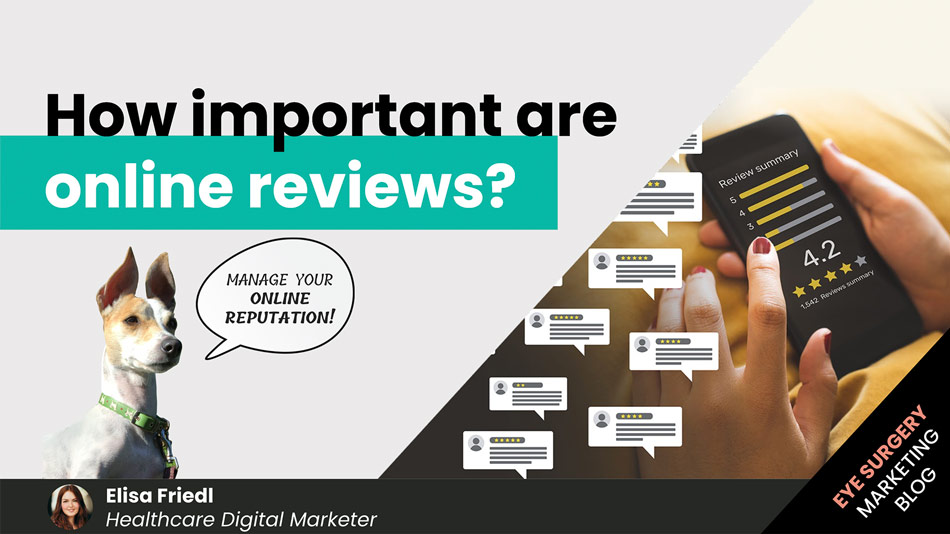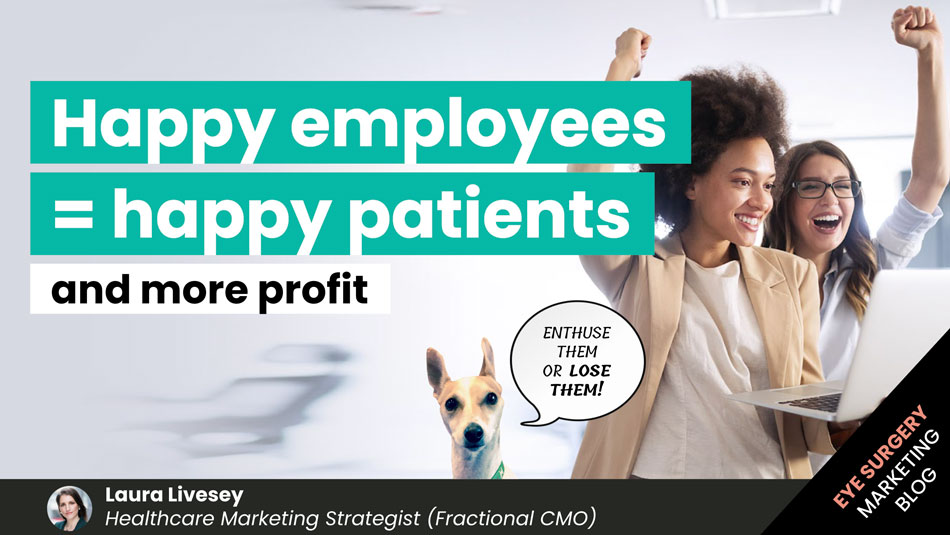
Happy employees equal happy patients and more profit
How much time do you spend thinking about how to keep your employees engaged?
Employee engagement has predictable ROI. You need to start engaging your team with social-emotional skills training, recognise your team members at least once a week and build trust with quarterly Rocks.
In this post, we’ll show you how.
You’ve probably heard of the Ritz-Carlton hotel chain. Whether you’ve stayed there or not, most people associate the hotel chain as one of the classiest and fanciest hospitality options out there.
For example, Ritz Carlton reportedly has an average Net Promoter Score (NPS) 1 NPS stands for Net Promoter Score, a globally-recognised metric used in customer experience programmes. NPS measures the loyalty of customers to a company. of 78, which is almost double the average of their competition who averages a score of 39. They consistently achieve one of the highest known NPS scores in the hotel industry.
We’ve been studying the playbooks of companies like Ritz-Carlton to understand the formula for the customer service gold standards they use to deliver 5-star experiences.
If you choose your models right, borrowing practices from great companies outside of your industry can provide game-changing results.
Luxury goods and services companies are a great place to look for inspiration
The Ritz Carlton Credo seems simple at first glance. It follows three basic steps of service that you too can implement. They are:
- A warm and sincere greeting.
- Use the guest’s name. Anticipation and fulfilment of each guest’s needs.
- A fond farewell. Give a warm goodbye and use the guest’s name.
You got this, right? But hang on a moment.
Don’t miss the trend hidden in the three statements above. Baked into this seemingly simple formula are employee behaviours driven by authenticity.
Authentic interactions that honestly express “natural warmth”, “real sincerity”, “a true eagerness to serve”, “a real fondness for patients”, “genuine warmth” and “a keen interest in having a relationship”, are rarely glimpsed in the clinic teams that we routinely mystery shop.
So it’s not as simple as it appears on the surface and most clinics are not providing this high level of authentic service. One of the reasons for this is that most employees today are not happy or engaged at work.
Most employees are not engaged at work
It is no secret that healthcare employees frequently feel overworked, under-appreciated, and exhausted. Any or all of those conditions or sentiments can harm patient treatment, care, and ultimately satisfaction.
Back in 2017, Jim Clifton, the Chairman and CEO at Gallup, a world leader in measuring employee engagement, outlined several alarming statistics about ‘the world’s broken workplace’.
Clifton noted that only 15% of employees worldwide were engaged. Fast forward a few years with management practices still frozen in time, and throwing a pandemic into the mix, and we’ve seen those figures worsen.
While some countries rank better than the 15% average (the US had 36% employee engagement through 2020), others rank worse (the UK had 8% engagement as of Gallup’s 2017 report).
In total, Gallup estimates that the lack of engagement costs the global economy a sum of $8.1 trillion, nearly 10% of GDP, in lost productivity each year.
Employee engagement is increasingly becoming one of the most important factors to attract and retain talent, and it has a direct link to corporate performance.
Gallup’s researchers report that “Engaged employees act differently, going above and beyond to surpass expectations, and that gives their organisations a competitive advantage.” Said in another way, employee engagement is the emotional commitment employees have to the company and its goals.
Put simply, when your employees are engaged, they care about your practice, their team and their patients.
And this emotional engagement has far-reaching impacts across your practice, beyond customer service. In a Gallup study of 200 hospitals, they found that nurse engagement levels were the number one variable correlating to mortality. And an engagement study by the NHS in England showed a strong correlation between engagement and reduced staff turnover and absenteeism.
So, we hope you’re now wondering how you can improve your employee engagement.
(NOTE: Want to see how your practice marketing measures up against the best in class? Take this 5-minute quiz to see how you stack up in the 9 areas of practice marketing and get specific tips and advice on how you can improve your weak points and better leverage your strengths).
The top 3 drivers to improve employee engagement
A key insight for clinics looking to increase their employee engagement is that it has very little to do with employee appreciation nights, compensation, or staff parties.
It has everything to do with who your manager is, and how she or he is helping you to grow, to feel appreciated and to trust that the organization has a great future.
These top 3 drivers of engagement are based on an analysis of over 10 million workers in 150 countries:
- Growth—you feel like you are advancing and learning new things
- Recognition—you feel appreciated
- Trust—you trust the organization has a bright future
There are many excellent books, resources and consultants available on how to improve employee engagement and happiness. We’ll give you some starting points below to get on the road to better performance.
“Without employee engagement, you’re never going to get the kind of ultimate patient experience you’re hoping for.” –Mike Packnett, CEO, Parkview Health
1. Enable growth with soft skills training
Ophthalmology is a fast-moving discipline and you likely need your team to keep pace with their technical skills. Still, many aspects of patient care can be routine which can bore people and result in disengagement.
To remain engaged, your team should develop their social and emotional skills as well. Teams use social and emotional skills in every stage of the patient journey and these soft skills are as important as technical ones.
To serve this need, you can create an annual training plan for your team to improve their soft skills by learning how to:
- better adapt to different personality types
- more effectively manage patients from different backgrounds, ages and lifestyles
- become better listeners who are more capable of demonstrating emotional support
- become better communicators and better-skilled negotiators
- apply interview skills when they answer calls from prospective patients
- use listening skills to understand their caller’s motivations
- better support patients when they’re anxious
- better respond to a patient’s questions and their desire to be understood.
As a bonus, soft skills are the most transferable skills you can teach people. These skills can help them not only become better workers, but also more effective humans. They’ll thank you for it and have more stable and productive relationships as a result.
“I truly believe that if you take care of your employees, they will take care of your business.” – Richard Branson
2. Staff prefer these six methods of appreciation
Great managers know that there is no such thing as too much recognition as long as it’s honest and deserved.
According to Gallup’s analysis, only one in three workers in the U.S. strongly agree that they received recognition or praise for doing good work in the past seven days.
High practice staff turnover is often a problem, and sadly, employees who do not feel adequately recognized are twice as likely to say they’ll quit in the next year.
There are hundreds of ways you can recognise your team members. The key is to do it frequently at least every 7 days. Use these six specific methods of recognition and take special note that money isn’t the only (or the top) form.
Here are six ideas on what your team wants from you:
- Public recognition or acknowledgement via an award, certificate or commendation
- Private recognition from a boss, peer or customer (this one is easy and critical to do weekly!)
- Obtaining or receiving a high level of achievement through evaluations or reviews
- Promotion or increase in the scope of work or responsibility to show trust
- An unexpected monetary award such as a trip, prize or pay increase
- Personal satisfaction or pride in work
“You can’t be the best place to buy if you’re not the best place to work” – Fred Reichheld
3. Build trust with quarterly “Rocks”
Over the last 20 years, an almost universal truth in eye clinics is that practice leaders struggle to find and to keep good people.
One of the best systems we’ve used to help solve these issues is EOS, short for Entrepreneurial Operating System. EOS is not a computer operating system, but rather a people operating system that harnesses human energy through a simple set of tools and principles.
Healthcare leaders can get caught in emotional gridlock and the practical tools of EOS help leadership teams become more cohesive, functional and healthy so that they can create
a.) a vision and
b.) some traction, so they can execute on that vision instead of spinning their wheels.
Both vision and traction create trust in your organisation which helps address the third pillar of employee engagement.
Vision gets everyone 100% on the same page with where you’re going and how you plan to get there. Traction instils the focus, discipline and accountability you need throughout the practice so that everyone executes on your vision – every day.
Sharing your vision consistently is an important part of building and maintaining trust in your practice. Something you can do immediately to build more trust is to take your long term goals and decide what are the three to seven things that you must achieve in the next 90 days to move you closer to those goals.
We call these your “Rocks”. If you hold a meeting every quarter to share progress on the previous quarter’s Rocks and share the new Rocks for the next quarter, your team will start to feel more trust in the future you are all creating together.
Ignore employee engagement at your peril
Healthcare leaders used to think employee engagement was a “nice to have” and would underinvest their time and money in these initiatives.
Engagement is actually an enabler of a practice’s most important goals and has predictable ROI. Start engaging your team with social-emotional skills training, recognise your team members at least once a week and build trust with quarterly Rocks.
NOTE: The best way to answer that nagging question about practice growth or marketing or patient volume in the back of your mind is to book a free 15-minute compatibility call. Get some options and go away with a clear idea of what’s possible.
About the author

Laura Livesey
Founder & CEO
Laura Livesey is the co-founder & CEO of LiveseySolar. She has developed powerful refractive surgery marketing systems that increase patient volumes and profits for doctors, clinics, and hospitals, since 1997.
Related Posts
Meet our Co-Founders
We’re passionate about helping leaders of high-quality, growth-minded practice owners double their practice revenue

Rod Solar
Founder & Scalable Business Advisor
For over 20 years, I’ve helped ophthalmology entrepreneurs scale their private practices. I specialise in doubling revenue within three years by offering a proven framework, hands-on experience, and a team of experts who implement what works. We take the guesswork out of growth and scale, so you can focus on delivering exceptional patient care while maximising the value of your business.
LiveseySolar completely transformed the way we were approaching this… We’ve gone from having just the dream of having a practice to having a practice up and running with people making inquiries and booking for procedures… It’s extremely pleasing. We feel lucky we connected with LiveseySolar.
— Dr Matthew Russell, MBChB, FRANZCO, specialist ophthalmic surgeon and founder of VSON and OKKO

Laura Livesey
Founder & CEO
I’m the co-founder & CEO of LiveseySolar. I’ve developed powerful eye surgery marketing systems that increase patient volumes and profits for doctors, clinics, and hospitals, since 1997.
Rod and Laura know as much about marketing surgery to patients as I know about performing it. They are an expert in the field of laser eye surgery marketing. They know this industry inside out. I believe that they could help many companies in a variety of areas including marketing materials, sales training and marketing support for doctors.
— Prof. Dan Reinstein, MD MA FRSC DABO, founder of the London Vision Clinic, UK






